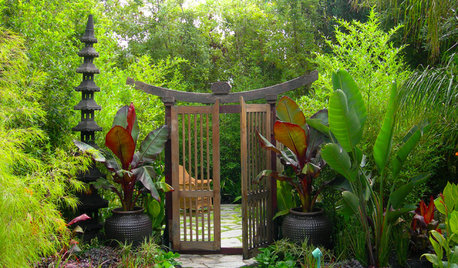What would you use to fill 10' of shrunk soil level?
kristimama
12 years ago
Related Stories

GARDENING GUIDESGardening Solutions for Heavy Clay Soils
What’s a gardener to do with soil that’s easily compacted and has poor drainage? Find out here
Full Story
FARM YOUR YARDHow to Get Good Soil for Your Edible Garden
The nutrients in your soil feed the plants that feed you. Here are tips on getting it right — just in time for planting season
Full Story
GARDENING GUIDESHouzz TV: Make a Worm Bin for Rich Soil and Happy Plants
A worm-powered compost bin that can fit under a sink turns food scraps into a powerful amendment for your garden. Here’s how to make one
Full Story
GROUND COVERSGround Force: 10 Top Ground Covers for Your Garden
Protect your soil from weeds and drought this summer with a living mulch of ground covers
Full Story
DIY PROJECTS10 Terrific DIY Home and Garden Projects
Add spring panache inside your home and out with these engaging DIY projects for all skills levels
Full Story
GARDENING GUIDES10 Top Native Plants for the U.S. Southeast
For a low-maintenance and wildlife-friendly landscape, use Southern natives that withstand heat and humidity
Full Story
GARDENING GUIDES10 Easy Edibles for First-Time Gardeners
Focus on these beginner-friendly vegetables, herbs, beans and salad greens to start a home farm with little fuss
Full Story
CONTAINER GARDENS10 Ways to Take Containers Beyond the Patio
Enliven your landscape with pots and containers
Full Story
FRONT YARD IDEAS10 Ideas for a Front-Yard Edible Garden Your Neighbors Will Love
Choosing attractive, well-mannered plants and sharing the bounty will go a long way toward keeping the peace
Full Story
HOUSEPLANTS10 Top Plants to Grow Indoors
Brighten a room and clean the air with a houseplant that cascades artfully, stretches toward the ceiling or looks great on a wall
Full StoryMore Discussions






toxcrusadr
tapla (mid-Michigan, USDA z5b-6a)
Related Professionals
Reading Landscape Architects & Landscape Designers · Annandale Landscape Contractors · Fort Atkinson Landscape Contractors · Fort Worth Landscape Contractors · Peoria Landscape Contractors · Santa Maria Landscape Contractors · Shaker Heights Landscape Contractors · Shoreview Landscape Contractors · Westchester Landscape Contractors · Frederick Decks, Patios & Outdoor Enclosures · Lauderdale Lakes Decks, Patios & Outdoor Enclosures · Lenoir Decks, Patios & Outdoor Enclosures · Oak Ridge Decks, Patios & Outdoor Enclosures · Springfield Decks, Patios & Outdoor Enclosures · Vero Beach Decks, Patios & Outdoor EnclosureskristimamaOriginal Author
wayne_5 zone 6a Central Indiana
kristimamaOriginal Author
Kimmsr
kristimamaOriginal Author
joepyeweed
toxcrusadr
wayne_5 zone 6a Central Indiana
kristimamaOriginal Author
wayne_5 zone 6a Central Indiana
Kimmsr
kristimamaOriginal Author
Kimmsr
coachgrumpy
kristimamaOriginal Author
toxcrusadr
wayne_5 zone 6a Central Indiana
Kimmsr
toxcrusadr
kristimamaOriginal Author
kristimamaOriginal Author
Lloyd
wayne_5 zone 6a Central Indiana
Kimmsr
Lloyd
toxcrusadr
kristimamaOriginal Author